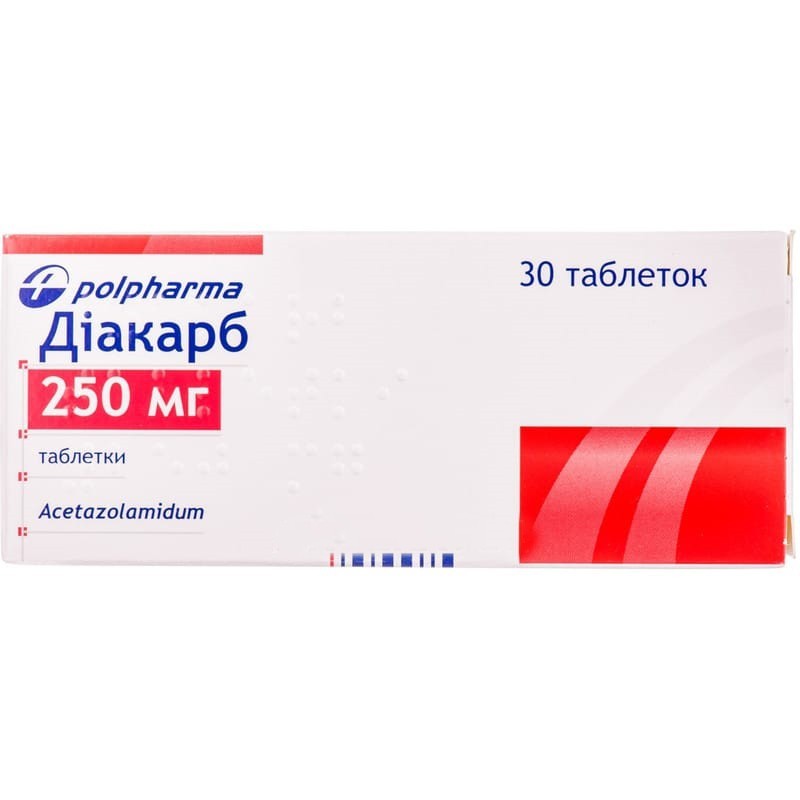



 Secure and encrypted payment processing
Secure and encrypted payment processing We ship to over 40 countries including the USA, UK, Europe, Australia and Japan
We ship to over 40 countries including the USA, UK, Europe, Australia and Japan Guaranteed refund or reship if you haven't received your order
Guaranteed refund or reship if you haven't received your orderdiuretic, antiglaucoma, antiepileptic agent. the mechanism of action is due to selective inhibition of carbonic anhydrase, an enzyme that catalyzes the reversible hydration reaction of carbon dioxide and the subsequent dissociation of carbonic acid. the diuretic effect is due to inhibition of the activity of carbonic anhydrase in the kidneys (mainly in the proximal renal tubules), which leads to a decrease in the reabsorption of bicarbonate, sodium and potassium ions, increased urine output, increased urine pH, increased reabsorption of ammonia. does not affect the excretion of chlorine ions. as a result of inhibition of the carbonic anhydrase of the ciliary body, it reduces the secretion of aqueous humor and reduces intraocular pressure. inhibition of carbonic anhydrase in the brain leads to the accumulation of CO2 in it and inhibition of excessive paroxysmal discharges of neurons, which causes the antiepileptic activity of the drug. the use of the drug with increased intracranial pressure is associated with the suppression of carbonic anhydrase in the vascular plexuses of the ventricles of the brain and a decrease in the production of smzh.
Pharmacokinetics
Suction. Acetazolamide is well absorbed in the digestive tract. Cmax in blood plasma is achieved 1-3 hours after administration. A low concentration of acetazolamide is maintained in the blood for 24 hours.
Distribution. Acetazolamide is widely distributed in many body tissues. Penetrates into red blood cells, blood plasma, kidneys and in a significant amount - into the liver, muscles, eyes and central nervous system. The drug does not accumulate in the tissues.
The fraction with proteins is 70–90% of the total acetazolamide in the blood. T½ is 4–9 hours. Acetazolamide crosses the placental barrier. Acetazolamide in small amounts passes into breast milk.
Metabolism. Acetazolamide is not metabolized.
The drug is excreted by the kidneys unchanged. After oral administration, ≈90% of the dose taken is excreted in the urine within 24 hours.
Glaucoma treatment: chronic open-angle glaucoma, secondary glaucoma, angle-closure glaucoma (to reduce intraocular pressure, with short-term preoperative treatment and before ophthalmic procedures);
Treatment of edema: edema in heart failure or due to medication; epilepsy (in combination with other anticonvulsants): small seizures (petit mal) in children, large seizures (grand mal) in adults, mixed forms);
Treatment for altitude sickness (the drug reduces the acclimatization time, but its effect on the manifestations of the disease itself is negligible).
The drug is taken orally.
Glaucoma treatment. The dose of the drug is determined individually, depending on the magnitude of the intraocular pressure.
Recommended doses for adults:
| With open-angle glaucoma | 250 mg (1 tablet) 1–4 times a day. A dose of 1000 mg (4 tablets) does not increase the therapeutic effectiveness of the drug |
| With secondary glaucoma | 250 mg (1 tablet) every 4 hours. In some patients, the therapeutic effect is noted after taking 250 mg (1 tablet) 2 times a day (long-term treatment is not shown) |
| In acute attacks of angle-closure glaucoma | 250 mg (1 tablet) 4 times a day |
Epileptic treatment